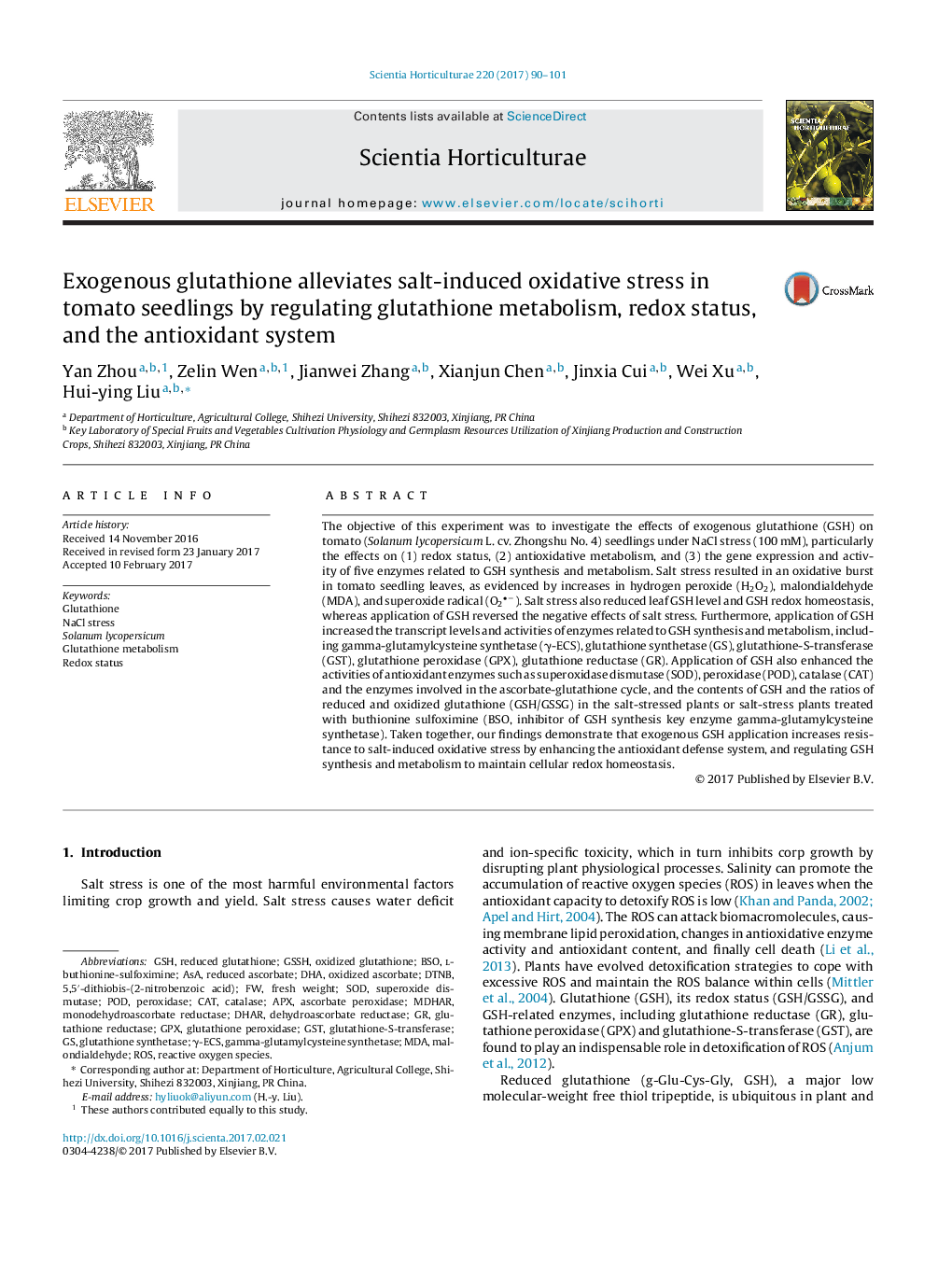| Article ID | Journal | Published Year | Pages | File Type |
|---|---|---|---|---|
| 5769605 | Scientia Horticulturae | 2017 | 12 Pages |
Abstract
The objective of this experiment was to investigate the effects of exogenous glutathione (GSH) on tomato (Solanum lycopersicum L. cv. Zhongshu No. 4) seedlings under NaCl stress (100 mM), particularly the effects on (1) redox status, (2) antioxidative metabolism, and (3) the gene expression and activity of five enzymes related to GSH synthesis and metabolism. Salt stress resulted in an oxidative burst in tomato seedling leaves, as evidenced by increases in hydrogen peroxide (H2O2), malondialdehyde (MDA), and superoxide radical (O2â). Salt stress also reduced leaf GSH level and GSH redox homeostasis, whereas application of GSH reversed the negative effects of salt stress. Furthermore, application of GSH increased the transcript levels and activities of enzymes related to GSH synthesis and metabolism, including gamma-glutamylcysteine synthetase (γ-ECS), glutathione synthetase (GS), glutathione-S-transferase (GST), glutathione peroxidase (GPX), glutathione reductase (GR). Application of GSH also enhanced the activities of antioxidant enzymes such as superoxidase dismutase (SOD), peroxidase (POD), catalase (CAT) and the enzymes involved in the ascorbate-glutathione cycle, and the contents of GSH and the ratios of reduced and oxidized glutathione (GSH/GSSG) in the salt-stressed plants or salt-stress plants treated with buthionine sulfoximine (BSO, inhibitor of GSH synthesis key enzyme gamma-glutamylcysteine synthetase). Taken together, our findings demonstrate that exogenous GSH application increases resistance to salt-induced oxidative stress by enhancing the antioxidant defense system, and regulating GSH synthesis and metabolism to maintain cellular redox homeostasis.
Keywords
DHARMDAmonodehydroascorbate reductasel-buthionine-sulfoximineBSOGSSHDTNBoxidized ascorbateMDHARdehydroascorbate reductaseAPXGPXGSTγ-ECSASAPODGSHCAT5,5′-dithiobis-(2-nitrobenzoic acid)ROSreduced ascorbateNaCl stressDHASODSuperoxide dismutasemalondialdehydeGlutathione metabolismfresh weightRedox statusPeroxidaseascorbate peroxidaseCatalasereduced glutathioneGamma-glutamylcysteine synthetaseGlutathioneglutathione-S-transferaseoxidized glutathioneglutathione reductaseglutathione synthetaseglutathione peroxidaseSolanum lycopersicumReactive oxygen species
Related Topics
Life Sciences
Agricultural and Biological Sciences
Horticulture
Authors
Yan Zhou, Zelin Wen, Jianwei Zhang, Xianjun Chen, Jinxia Cui, Wei Xu, Hui-ying Liu,
